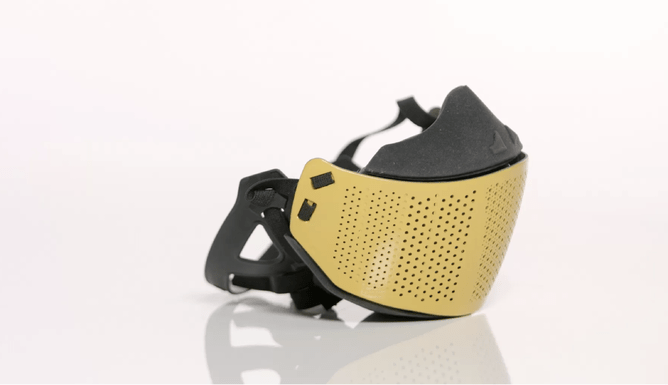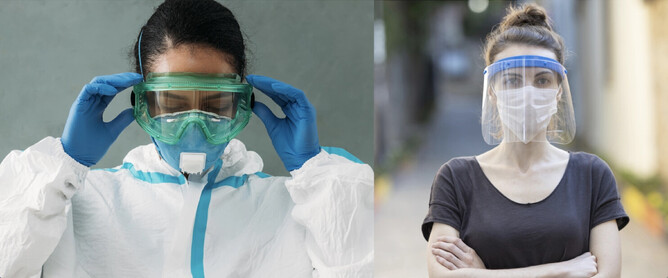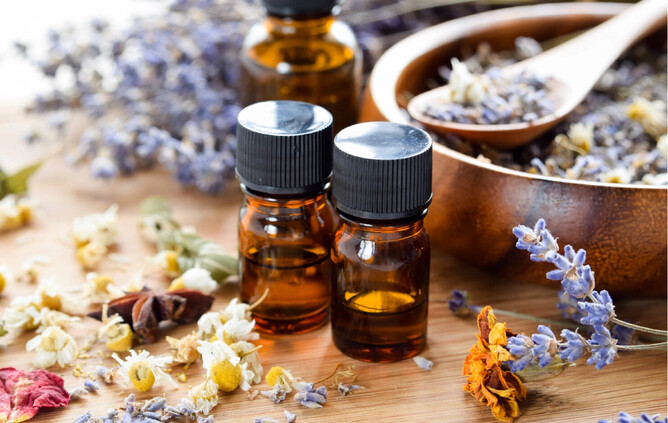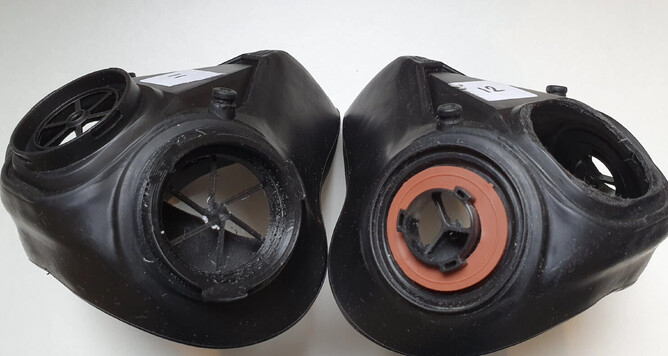In most scenarios where a mask is needed, the burden and stress on the wearer could be reduced relatively simply. But once you introduce respirators, there needs to be a shift in understanding in order to deliver a mask that truly reduces the physical and psychological burden.
The pressure on NHS staff treating Covid patients over the last 18 months has increased the need for high-quality protective equipment that can minimise the stress and burden on the wearer.
A concept brought to our engineering design consultants by Dr Jenny Tillotson of eScent, was to design a low-burden mask with suitable protection, which could then be enhanced with the introduction of a personalised aromatherapy dispensing system.
What's in a Mask?
There is a great deal of misunderstanding over the function of masks, and the features that exist in different products. The range of different products is extensive, from face-covering to pressure-assisted masks.
Masks are primarily designed to protect the wearer of the mask, although un-valved face-coverings and surgical masks will remove droplets from the exhaled breath. Any masks with outlet valve features are unlikely to provide any filtration of exhaled breath.
The problem with the un-valved solutions is that they are usually poor fitting, and as much as 20% of inhaled breath can bypass the filtration media, and still meet standard requirements. This is exacerbated by the fact that the media becomes saturated from the exhaled breath, increasing breathing resistance and causing more airflow around the edge of the mask.
Masks with both inlet and outlet valves are much better at maintaining consistent performance but valves and ducts are relatively small, and inconsiderate of the airflow moving through them. They are usually more focused on the mechanical interfaces with the face piece and filters.
Most masks do not provide any means of ensuring improved communication, so nearly all muffle voices, and make it difficult to understand what the wearer is saying. Misunderstanding when treating patients is a direct concern but having to repeat communication can also be frustrating.
Many masks are disposable, which makes the decontamination process easier, which is important to us as a B Corp design engineering company. However, simply washing and using their own mask would save a huge amount of waste and allow them to tailor and personalise their own mask for comfort and appearance.
Scent Background - Essential Oils and The Limbic System
Essential oils are often used in aromatherapy to support health and well-being. Inhaling the aromas can stimulate areas of your limbic systems, which is the part of your brain that plays a role in emotions, behaviours, sense of smell, and long-term memory. The limbic system also plays a role in controlling several unconscious physiological functions, such as breathing, heart rate and blood pressure.
The dispensing of the aromas in a mask needs a certain level of creative engineering in order to be carefully controlled as a mist (not a spray) to prevent any damage to skin or discomfort to the user. It should be introduced as very small droplets, so they would be readily inhaled and avoid wetting the face. The aroma needed to be introduced as a short burst, that would quickly dissipate.
Olfactory Adaption
Two sources of different aromas were required to prevent the user from becoming de-sensitised to a single scent, a response known as olfactory adaption. The user would be able to select or concoct their own blends of oils that could be dispensed in their own personalised system.
Our Engineering Product Design Approach
The Imagination Factory team quickly identified that there was no point introducing aromas into an existing uncomfortable mask, as the essential oil benefits would never be realised. We were privileged to be able to conduct interviews with a range of frontline workers – from paramedics to pharmacists to physios – to establish themes of vulnerability, safety, stress at work, and stress relievers.
The HSE* recommend FFP3 level respirators for adequate protection from pathogens carried in airborne water droplets, so through creative engineering, this was set as the protection performance of the mask. This was reinforced by our interviewees who felt particularly vulnerable in low levels of protection (blue surgical mask and basic scrubs).
However, many of our participants highlighted that some of the key causes of stress were feeling hot and uncomfortable in higher levels of protection (FFP3 mask, full gown, and apron). Increased breathing resistance and difficulty communicating with colleagues and patients also contributed to stress in the workplace.
Our team of engineering design consultants identified that addressing some of these issues with current masks, alongside the introduction of essential oils for stress relief, would greatly benefit the users. All of the features of the mask that could influence the airflow were then carefully assessed independently, including filter size and media, ducts, and valves to assess the burden this has on the wearer.
A valved mask (both inlet and outlet) was selected as this helps to protect the filter media, and ensure a more controlled, sustained environment in the mask for longer periods of wear. This would also shuttle clean air through the mask allowing the scent to dissipate more quickly, rather than lingering for a longer period.
The sizes of valves and ducting were significantly increased, and close attention was paid to aerodynamic features to provide as little resistance as possible to the airflow.
The outlet sections are also profiled in the same manner as a megaphone, to improve the intelligibility of the wearer as much as possible.
The construction was modified to enable users or groups to personalise the outermost cover or tailor it for their specific application.
Delivering The Essential Oil Aromas Through Creative Engineering
With a solid foundation for a mask design, we set about delivering the essential oil aromas. Producing the desirable tiny droplets using a single nozzle proved to be a possibility, but this suffered from blocking issues and was unable to supply the immediate delivery of more substantial volumes required to provide a burst of scent.
We therefore used an ultrasonic disc to atomise the oils, thereby effectively having multiple tiny nozzles operating simultaneously, which could deliver a “puff” of tiny droplets (see video below). As part of the development, we monitored the environment inside the mask, recording temperature, pressure, humidity and particle distribution.
These measurements showed how they could be potentially used to identify leaks or damage creating a breach of protection, or when breathing resistance increases due to blockages or clogged filters. They can also be used to assess the wearer's behaviour, and when dispensing aroma to the wearer would be appropriate.
The particle distribution helped determine how much scent should typically be dispensed to provide a distinct aroma (without being overwhelming) and observe how the scent dissipates. Obviously, specific doses would be adjustable through the electronics for different wearer preferences.
The scent dose was then combined with frequency-of-use, to design the smallest possible reservoir to enable typical NHS workers to use a module for extended wear periods (>8hrs). The reservoir capsules were made detachable from the dispensing unit, so users could prepare refills as emergency replacements or alternative aromas.
The modular arrangement lends itself to use in other applications and environments while still adopting the same architecture and could use multiple sources of feedback to determine when the scent is delivered.
The two dispensing modules were then embedded in the low burden mask design to produce a family of different working prototype masks for evaluation, supplemented with an additional desktop demonstrator.
In Summary
It is hoped further testing and feedback on these prototypes can then secure further investment to progress the engineering product design to production, and ultimately see the benefits provided to users.
Editor's note: Having concluded the project and briefly tested the prototypes, the Imagination Factory team is now calm, relaxed and lightly infused with lavender…
* Health and Safety Executive Government agency
Tim is our Engineering Director and brings over 20 years experience to the team, including insights from senior roles at Dyson and Herman Miller in design and development of innovative solutions. He holds patents in medical, military and consumer markets, taking initial research and concepts to finished products.
If you are looking for a design engineering company or if you'd like to talk more about any area I've mentioned above, please get in touch.



